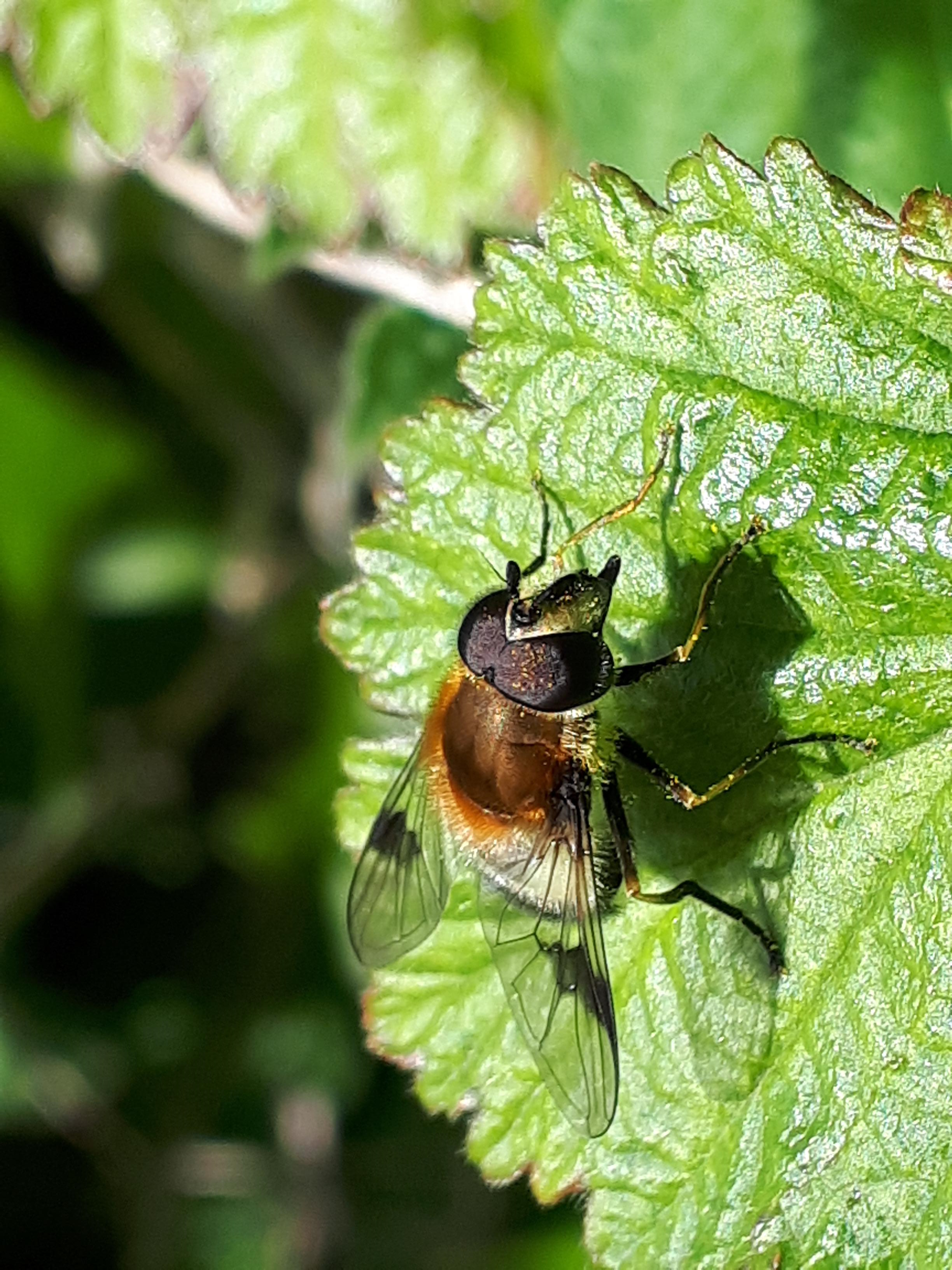 Getting to grips with hoverflies
Getting to grips with hoverflies
We planted a shrub in the vegetable patch years ago. I am sure at the time we knew what type of shrub it was, but this information has long since been lost from the Lysaght family folklore. Briefly, early in the year, it throws out small white flowers that seem to be great favourites of the early bees when there is little else flowering. Other than that quality, I usually think of it as a nuisance. It grows like billyoh and needs to be cut back with great vigour each year. It was planted in the wrong place taking up way too much space where it grows. And as if to add insult to injury, it is just a pale green colour, blending in marvellously with all the other pale green vegetation in the garden.
The start of the week saw a significant turn in the weather. The air temperature dropped and the rain arrived. In the classic descriptor of Irish weather, it was showers with sunny spells; during the day it rarely got above 11 or 12 °C. Insects that need the warmth of the sun to fly and go about their business, struggled. They sought out the warmest spots to bask in whatever bit of sun there was. It was in this context that I saw my unloved bush in a new light. When the sun appeared, no matter how briefly, the bush became a magnet for insect life. Flying insects of all types seemed to descend on the light green leave to bask in the sun. I presume the slightly lighter hue of the vegetation made it more attractive than the nearby foliage. I found I no longer needed to roam the garden in search of elusive creatures to find and photograph, but instead could just wait by my bush for them to come. I found a new past time – Dipteran window shopping. On display were all types of flying insects, like mannequins, basking in the seasonal glow.
Diptera is the scientific name given to the taxonomic group of True Flies; derived from the Latin ‘di’ meaning ‘two’ and ‘ptera’ meaning ‘wings’. It includes some of the insects that we think of as generally being a nuisance, such as mosquitoes, craneflies, house flies, bluebottles, midges, etc. But it also includes hoverflies, those wonderfully industrious creatures that diligently pollinate all the flowers and crops that grow in our garden and fields. They are an amazing group of insects that only do good. Most people would be familiar with those that are striped black and amber, but they come in a wide variety of shapes and patterns. There are over 180 different species of hoverfly in Ireland. Some can be identified with care in the field, but this requires an intimate inspections of hoverfly anatomy. Identification of hoverflies will bring you into a world of familiarity with abdomen pattern, scutellum colour, antennae shape and colour, wing vein pattern, femur, tibia and tarsus colour, and should you venture further, knowledge of the halteres club and plumule. A veritable rabbit hole of complexity that should you chose to go down there is little hope of escape.
My interest in hoverflies only extend to the most flamboyant ones that are crying out to be noticed. Even those provide a sufficient challenge for me. But having spent some time around my new favourite bush in the garden, I have found at least five that I am now confident in identifying.






